ChatGPT:
The Narman Fairy Chimneys resemble those of Cappadocia but are unique in their reddish hue, which comes from the high iron content in the soil.
The Narman chimneys were formed through a similar geological process involving volcanic activity followed by erosion. Layers of soft sedimentary rock were capped by harder rock layers. Over time, wind and water erosion carved the softer layers, leaving behind the towering structures with caps on top. The red color and the unique shapes give the Narman Fairy Chimneys a distinctive appearance, setting them apart from those found in other parts of Turkey. This area is sometimes referred to as Turkey’s “Red Fairy Chimneys,” drawing comparisons to formations found in the American Southwest.
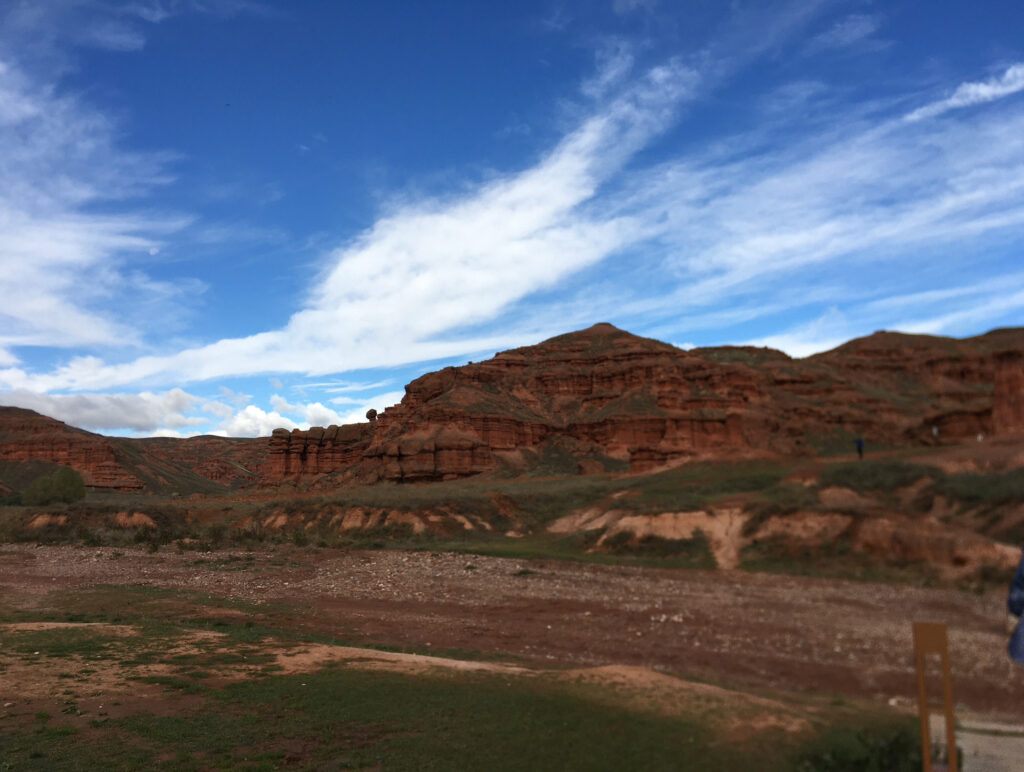
The Narman Fairy Chimneys in Turkey, like other similar geological formations, formed over millions of years due to a combination of volcanic activity and erosion. The process can be broken down into several stages, with each stage spanning a vast period of geological time:
1. Volcanic Activity (Miocene Epoch, ~23 to 5 million years ago): During this period, intense volcanic activity in the region deposited thick layers of volcanic ash, lava, and sediment. This ash eventually hardened into a soft rock known as tuff, while subsequent eruptions deposited harder rock layers, including basalt, on top. The volcanic deposits from this period provided the foundational layers for the eventual formation of fairy chimneys.
2. Sedimentary Layering and Compaction (Late Miocene to Pliocene, ~5 to 2 million years ago): Over time, additional layers of sediment accumulated on top of these volcanic layers. Natural processes compacted and cemented these materials, forming a stratified landscape with alternating soft and hard layers.
3. Erosion (Pleistocene Epoch to Present, ~2 million years ago to today): Once the volcanic activity subsided, the process of erosion began to shape the landscape. Wind, rain, and temperature changes slowly eroded the softer tuff layers more rapidly than the harder rock caps. This differential erosion process carved out the tall, column-like structures we see today.
The unique red coloration of the Narman chimneys is due to the iron-rich sediments in the region, which became more pronounced as the softer materials eroded away. This ongoing process of erosion continues to shape and refine the formations even today, although it is exceedingly slow on a human timescale.
In summary, these formations likely began to take shape several million years ago and were gradually sculpted into their current forms through continuous erosion over the past few million years, with the most prominent features visible today shaped over the last 2 million years.
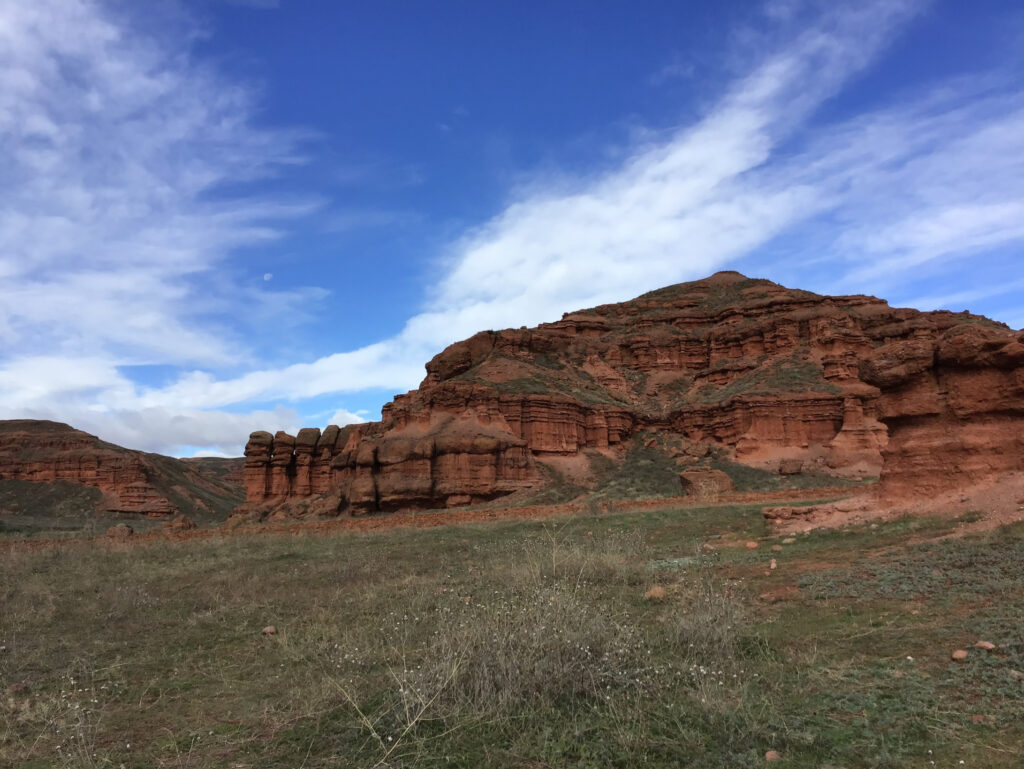
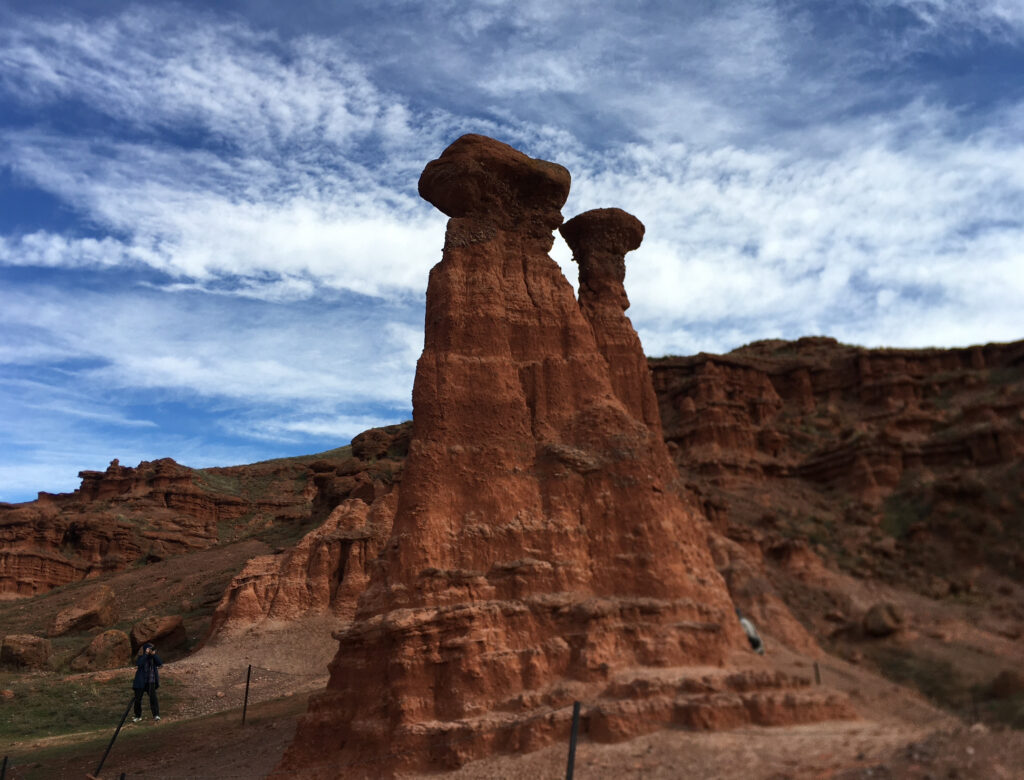
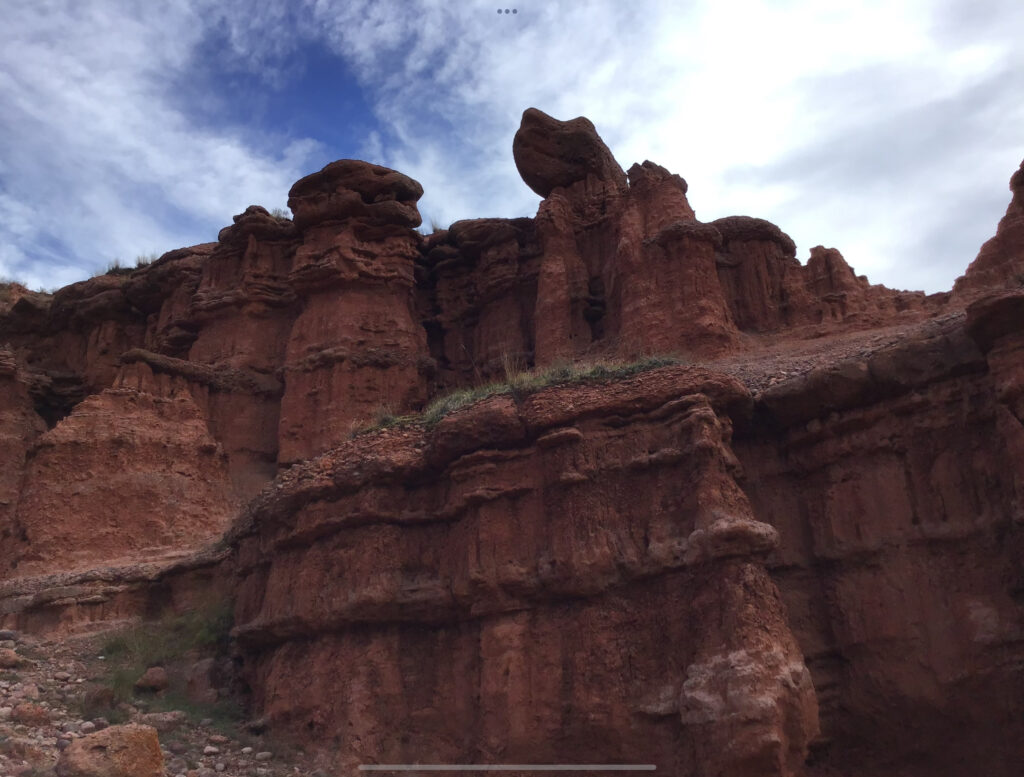

The Narman Fairy Chimneys area in Erzurum, Turkey, offers a variety of scenic hiking trails that let visitors explore these fascinating formations and the surrounding landscapes. Here are some recommended trails:
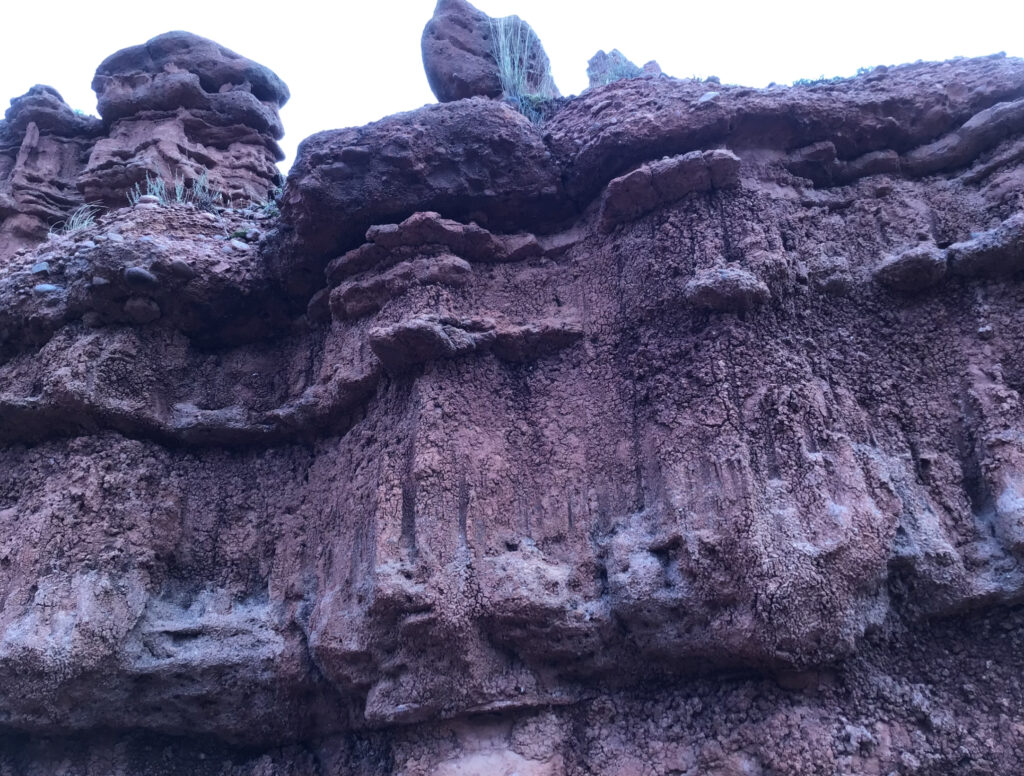
1. Narman Fairy Chimneys Trail: This is a relatively short loop trail that takes you through the main area of the fairy chimneys. It provides up-close views of the red rock formations, allowing hikers to appreciate the unique shapes and textures. This trail is suitable for most skill levels and is a popular choice for those wanting to explore the chimneys without venturing too far.
2. Red Valley Trail: Named for the striking red hues of the rocks, this trail offers a slightly longer route through the Narman Valley. It’s a moderate trail with some elevation change, providing panoramic views of the fairy chimneys and surrounding landscapes. It’s a great choice for photographers and those looking to capture the beauty of the region.
3. Canyon Exploration Trail: This trail leads hikers through the canyons around Narman, where they can see unique rock formations and layers up close. It’s a moderate-to-difficult trail that includes some steep sections, offering a more adventurous experience. The canyon walls display various sedimentary layers, showcasing the geological history of the area.
4. Narman to Pasinler Route: This longer trail connects the Narman Fairy Chimneys with the nearby town of Pasinler. It’s more challenging and better suited for experienced hikers. Along the way, you’ll pass through scenic valleys, open plains, and other geological formations. The route provides a broader view of the region’s diverse landscapes.
5. Village Exploration Trail: This is an easier, shorter trail that combines the fairy chimneys with visits to nearby villages. It’s a great option if you’re interested in cultural experiences alongside natural beauty. You’ll have the chance to interact with local villagers and learn more about traditional life in the region.
Each of these trails offers a unique perspective of the Narman area, combining the beauty of the fairy chimneys with the broader natural and cultural landscape. The best time to hike here is during the spring and fall months when temperatures are mild, and the colors of the landscape are particularly vibrant.

